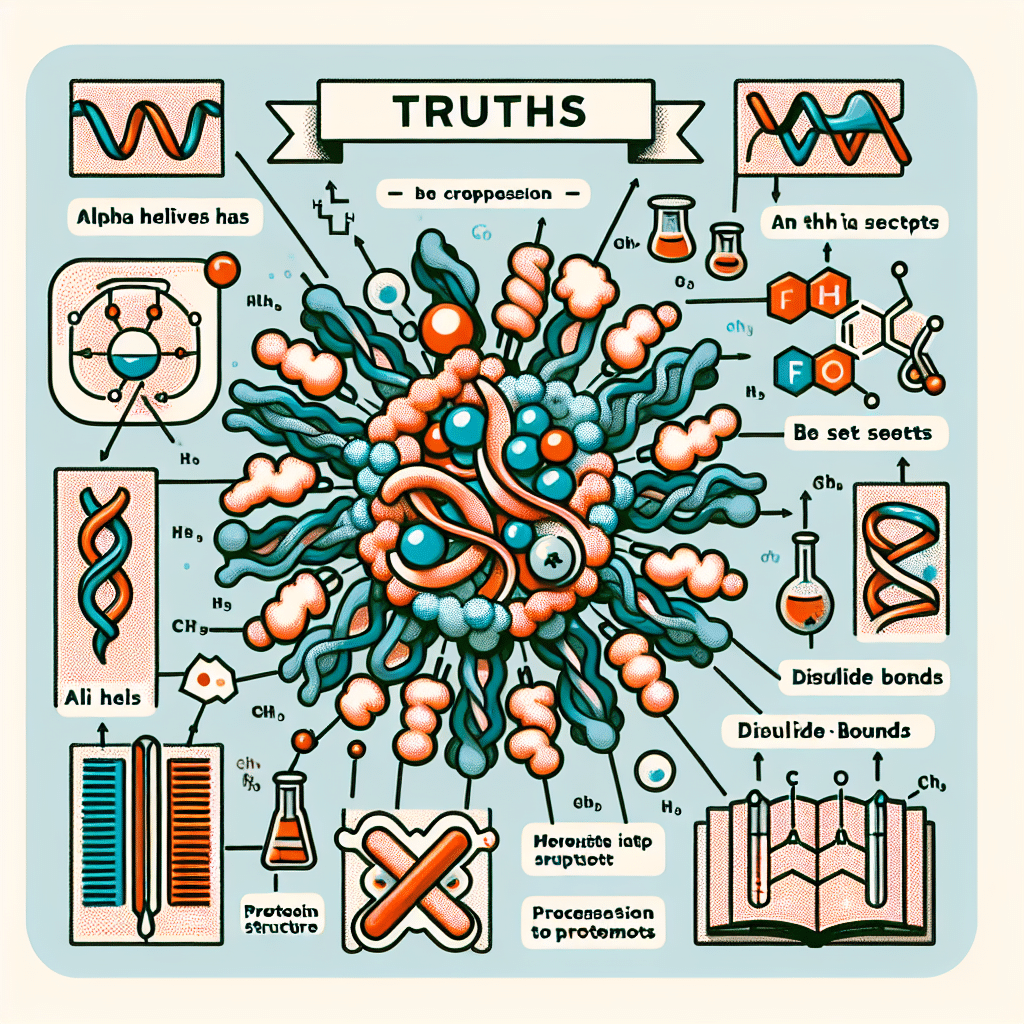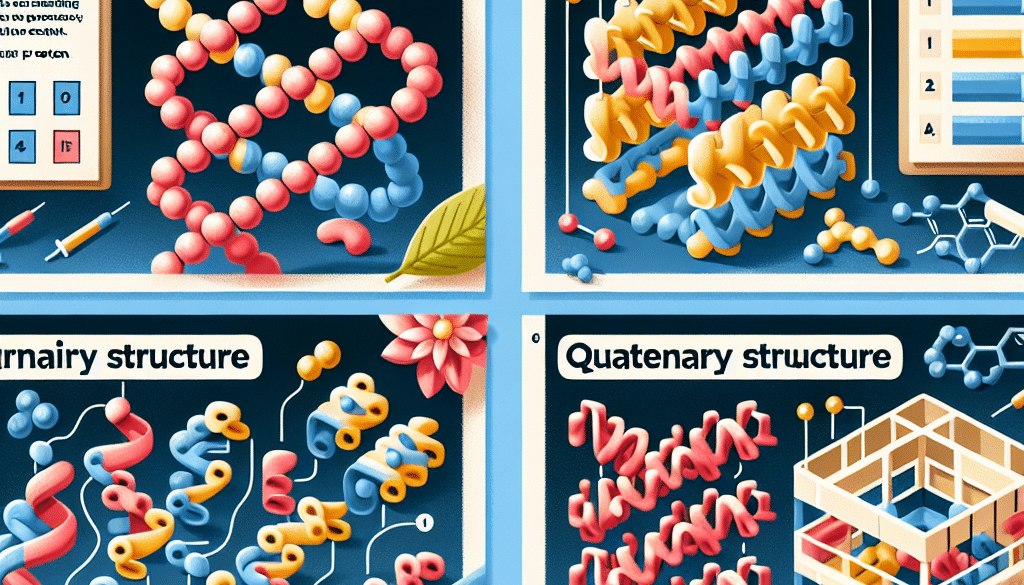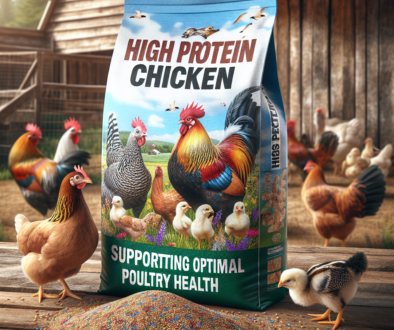Which of the Following Is True of Protein Structure: Clarifying Misconceptions
-
Table of Contents
- Protein Structure Essentials: Debunking Common Myths
- Understanding the Basics of Protein Structure
- Clarifying Misconceptions About Protein Structure
- Myth 1: Protein Structure Is Static
- Myth 2: All Proteins Have a Defined Structure
- Myth 3: Protein Folding Is Always a Spontaneous Process
- Myth 4: The Primary Structure Alone Determines Protein Folding
- Myth 5: Protein Function Is Solely Determined by Tertiary Structure
- Examples and Case Studies
- Statistics and Research Findings
- Conclusion: Key Takeaways on Protein Structure
- Discover ETprotein’s High-Quality Protein Products
Protein Structure Essentials: Debunking Common Myths

Proteins are the workhorses of the cell, performing a vast array of functions critical for life. Understanding protein structure is essential for fields ranging from biochemistry to pharmaceutical development. However, there are many misconceptions about protein structure that can lead to confusion. This article aims to clarify these misconceptions and provide a clear understanding of protein structure.
Understanding the Basics of Protein Structure
Before diving into common misconceptions, it’s important to understand the basics of protein structure. Proteins are made up of amino acids linked together by peptide bonds, forming a polypeptide chain. The sequence of amino acids in a protein is its primary structure. The local folding of the polypeptide chain into alpha-helices and beta-sheets constitutes the secondary structure. The overall three-dimensional shape of a protein, which is formed by the folding of the secondary structures, is known as the tertiary structure. Some proteins are made up of multiple polypeptide chains, or subunits, and the arrangement of these subunits in space is referred to as quaternary structure.
Clarifying Misconceptions About Protein Structure
Myth 1: Protein Structure Is Static
One common misconception is that once a protein is folded into its functional form, its structure remains static. In reality, proteins are dynamic molecules that can adopt multiple conformations. This flexibility is crucial for their function, as it allows proteins to bind to other molecules, catalyze reactions, and transmit signals within the cell.
Myth 2: All Proteins Have a Defined Structure
It’s often assumed that all proteins have a well-defined, rigid structure. However, some proteins, known as intrinsically disordered proteins (IDPs), lack a stable tertiary structure under physiological conditions. IDPs can still perform essential functions, often by adopting different structures when interacting with various partners.
Myth 3: Protein Folding Is Always a Spontaneous Process
While it’s true that protein folding is largely driven by the hydrophobic effect and the tendency to minimize free energy, it’s not always a spontaneous process. In the cellular environment, proteins often require the assistance of molecular chaperones to fold correctly and avoid aggregation.
Myth 4: The Primary Structure Alone Determines Protein Folding
The primary structure of a protein does dictate its final folded structure, but this process can be influenced by the cellular environment, post-translational modifications, and interactions with other molecules. Misfolding can lead to diseases such as Alzheimer’s and Parkinson’s.
Myth 5: Protein Function Is Solely Determined by Tertiary Structure
While the tertiary structure is important for function, the quaternary structure and dynamics also play critical roles. For example, hemoglobin’s function is dependent on its quaternary structure, which allows it to efficiently bind and release oxygen.
Examples and Case Studies
Real-world examples can help illustrate the truths about protein structure. For instance, the study of hemoglobin has shown how alterations in quaternary structure can affect oxygen binding, as seen in sickle cell anemia. Additionally, the prion protein, which can exist in a normal form or as a disease-causing agent, demonstrates how misfolding can lead to severe neurodegenerative diseases.
Statistics and Research Findings
Research has shown that up to 33% of proteins in eukaryotic cells may have disordered regions, challenging the notion that all proteins have a well-defined structure. Furthermore, the Protein Data Bank (PDB) contains over 170,000 structures, but this represents only a fraction of the possible conformations proteins can adopt.
Conclusion: Key Takeaways on Protein Structure
In conclusion, protein structure is far more complex and dynamic than often perceived. Proteins can be flexible, sometimes lack a defined structure, require assistance to fold, and have functions influenced by various structural levels and dynamics. Understanding these nuances is crucial for advancing our knowledge in biology and medicine.
Discover ETprotein’s High-Quality Protein Products
If you’re looking for premium protein ingredients for your products, consider ETprotein’s offerings. Their plant-based proteins, such as organic rice protein and pea protein, are non-GMO, allergen-free, and have a neutral taste, making them ideal for a variety of applications.
About ETprotein:
ETprotein, a reputable plant protein vegan protein Chinese factory manufacturer and supplier, is renowned for producing, stocking, exporting, and delivering the highest quality organic bulk vegan protein and plant proteins. They include Organic rice protein, clear rice protein, pea protein, clear pea protein, watermelon seed protein, pumpkin seed protein, sunflower seed protein, mung bean protein, peanut protein etc. Their offerings, characterized by a neutral taste, non-GMO, allergen-free attributes, cater to a diverse range of industries. They serve nutraceutical, pharmaceutical, cosmeceutical, veterinary, as well as food and beverage finished product distributors, traders, and manufacturers across Europe, USA, Canada, Australia, Thailand, Japan, Korea, Brazil, and Chile, among others.
ETprotein specialization includes exporting and delivering tailor-made protein powder and finished nutritional supplements. Their extensive product range covers sectors like Food and Beverage, Sports Nutrition, Weight Management, Dietary Supplements, Health and Wellness Products, and Infant Formula, ensuring comprehensive solutions to meet all your protein needs.
As a trusted company by leading global food and beverage brands and Fortune 500 companies, ETprotein reinforces China’s reputation in the global arena. For more information or to sample their products, please contact them and email sales(at)ETprotein.com today.














